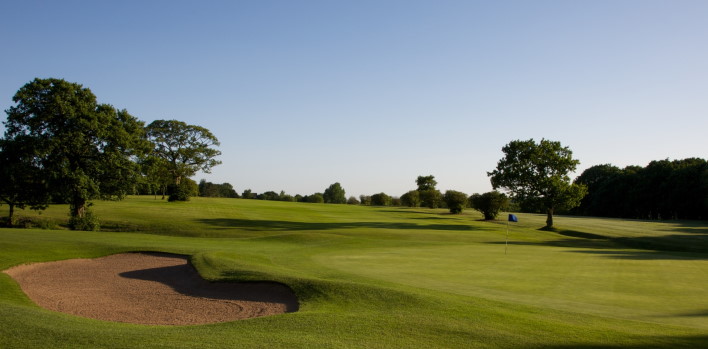Wilmslow

Many notable players have walked its fairways over the years - including Jacklin, Gallagher, Langer, Woosnam, Torrance and Faldo - thanks largely to the staging of the Greater Manchester Open and the Martini International in the late 1970’s and early 80’s.
Fast forward to today and whilst the 6,600-yard, par 72 layout is no longer a tour test for the World’s best players in more recent times it has still been selected as a regional qualifying course for The Open and to this day is the venue for many county championships and inter-county matches. There are many subtleties to the course which has an understated persona.
Located a couple of miles away from the town centre, within 10-15 minutes of the motorway network and not much farther from Manchester Airport, the course was presented superbly on my most recent visit in the “summer” of 2016 for the Wilmslow Crow scratch tournament. Indeed it was testament to the greenkeepers that it was in such good condition especially considering the second half of this WAGR 72 hole event, due to be played at nearby Stockport the following day, was postponed due to recent rainfall. Here the fairways were generally firm and fast running so consider it a well-draining course.
You very much have chance to make a score at Wilmslow mainly thanks to four par fives that, whilst no pushover, all offer up the opportunity of a birdie with the longest maxing out at just 522-yards. The best of this quartet is undoubtedly the 18th where after approximately 300 yards the fairway starts to plunge down an undulating and angled slope. There is a stream down the left, from where the favoured approach is played from if tackling the hole as a three-shotter, and deep hay to the right. The slope of the fairway short of the green makes finding the angled putting surface, protected by sand on the right, extremely difficult for those having a bash in two.
The four short holes are all interesting too. The 14th and 17th work in tandem and are played in opposite directions across a deep river valley. The former is perhaps the prettiest but the latter is probably the best, particularly if you get to play to a back-right pin. The 9th is the most dramatic played sharply downhill to a sloping green with the same brook that flanks the 18th cutting directly in front of the putting surface. However, that all said my personal favourite of all the short holes is the innocuous looking 6th that asks the golfer to try and shape the ball in from the right in order to avoid a solitary bunker short and left but there are grass hollows waiting for those that miss this double green (shared with the 3rd) either right or long.
The par fours at Wilmslow are also very good as a collection and are as varied as a set of two-shotters come without compromising the whole. The first has a fabulous, albeit intimidating, tee-shot over a deep valley to a fairway that breaks quickly left and asks the golfer to not only shape the ball right-to-left but also get the correct line; all this most likely in front of several onlookers.
The second and eighth are probably the two hardest holes on the course; both dogleg right-to-left and have excellent green complexes. The first of these shares a lovely area of the course where the second, seventh and 16th greens all converge.
The fourth, played to a green located on a diagonal ridge, and fifth, my least favourite hole on the course, run alongside each other in opposite direction as do the 10th and 11th which is a brilliant duo of shortish par fours. The tenth is one of the highlights of the course with a decision to be made from the tee before playing to a devilishly difficult to find, sloping and angled green.
As for the other par four holes, the 12th, 15th and 16th are sleeper holes to a certain extent but if you plot your way around these well then they could easily be the backbone to your score.
Wilmslow is a member of the James Braid Association of Golf Courses because of his involvement in the late 1920’s although other architects have had a hand in the course over the years.



